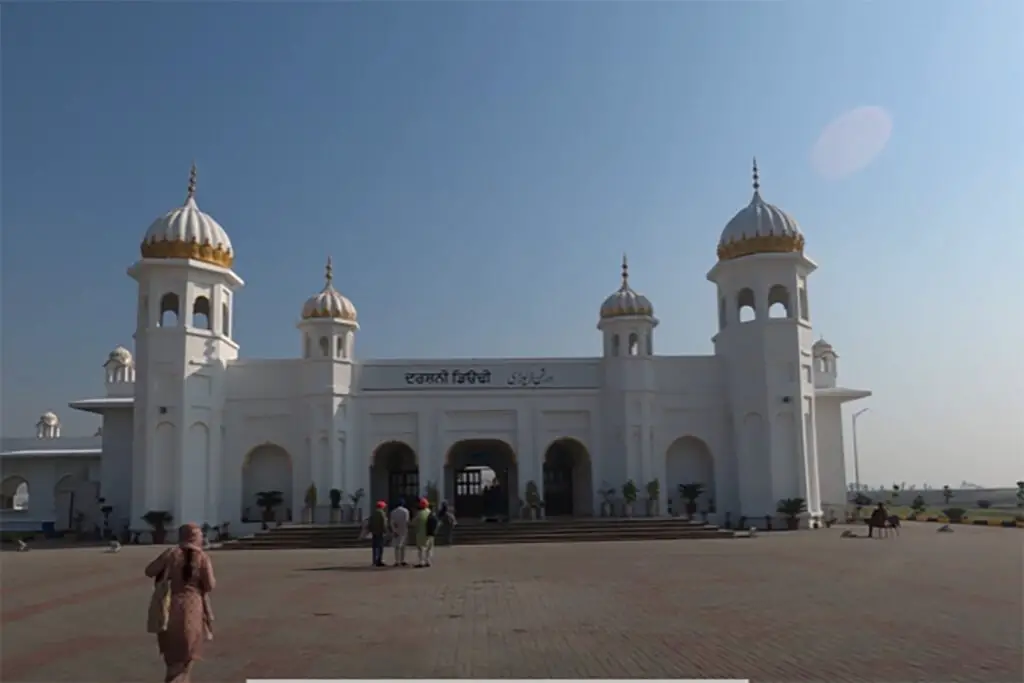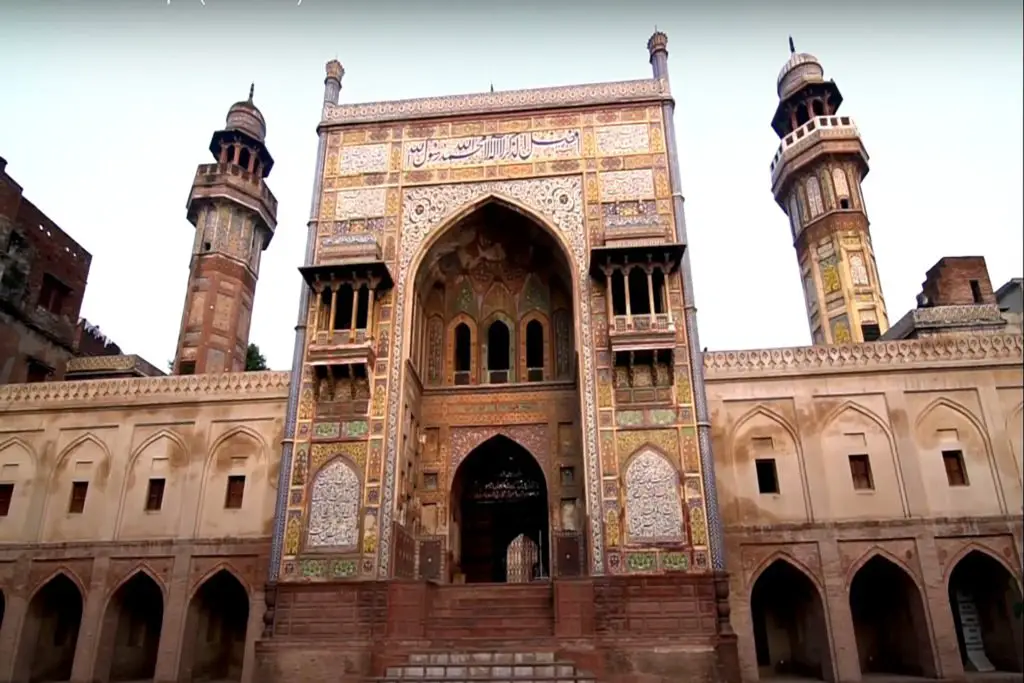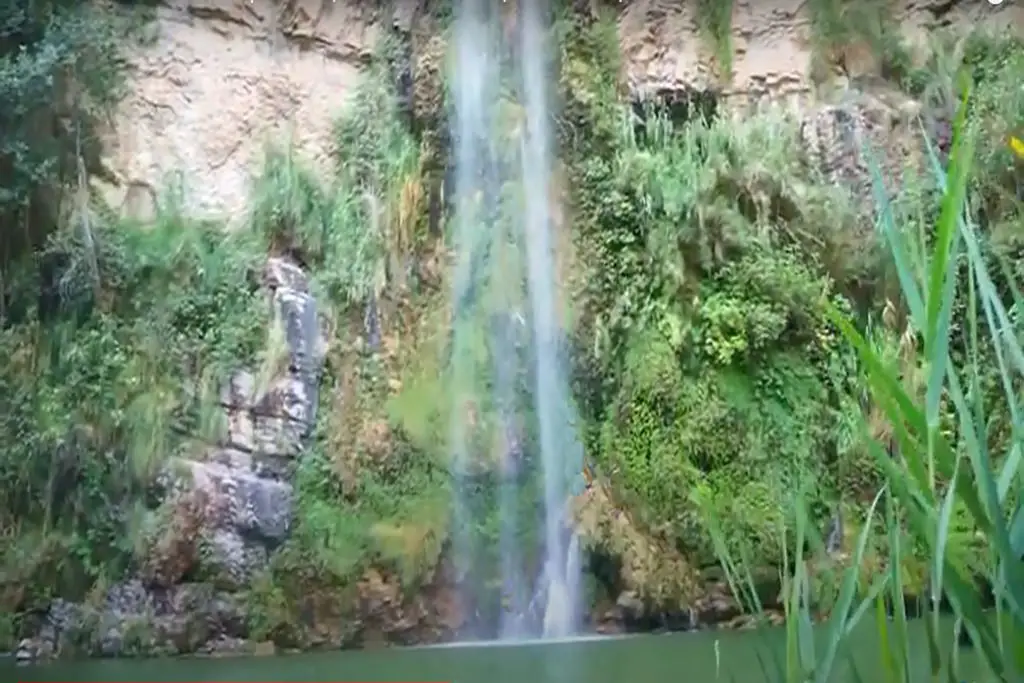Gurdwara Darbar Sahib Kartarpur Corridor Pakistan, also known as Kartarpur Sahib, is a Gurdwara in Kartarpur, located in Shakargarh, Narowal region, Punjab province in Pakistan. It was built on a landmark site where the founder of Sikhism, Guru Nanak, lived and united the Sikh community after his missionary journey (Dasis to Haridwar, Mecca-Medina, Lanka, Baghdad, Kashmir, and Nepal) and lived 18 years in death in 1539.
It is one of the holiest sites in Sikhism, near the Golden Temple in Amritsar and Gurdwara Janam Asthan in the Nankana Sahib.
Gurdwara is also noted for its location near the border between Pakistan and India. The sanctuary is visible on the Indian side of the border. Indian Sikhs gather in large numbers in bluffs to make a Darshan, or sacred view of the site, from the Indian side of the border.
Gurdwara Darbar Sahib Kartarpur Corridor was inaugurated by the then Prime Minister Imran Khan of Pakistan, on November 9, 2019, just a few days before the 550th anniversary of Guru Nanak’s birth. This historic moment officially allowed Indian Sikh visitors to gain extraordinary visa-free access to the Holy place in Pakistan. It is also called the largest Gurdwara in the world.
Location of Gurdwara Darbar Sahib Kartarpur Corridor Pakistan
Gurdwara Kartarpur Sahib is located in Shakargarh Tehsil in the Narowal region of Punjab, Pakistan. It is a top tourist attraction for tourists visiting Pakistan. The sanctuary is located about three miles [5 km] from the Indo-Pakistani border.
Significance of Gurdwara Kartarpur Sahib
Gurdwara was built to commemorate the place where Guru Nanak, founder of Sikhism, settled after his missionary work and cultivation. Guru Nanak founded the town of Kartarpur near the Ravi River in 1504, planted fields, and set up a community kitchen, or Langar. He compiled the Sikh Commune there and lived for 18 years until his death on 22 September 1539.
A gurdwara was built on which Guru Nanak is said to have died. It is therefore the second sacred place of the Sikh religion after Gurdwara Janam Asthan – the birthplace of Guru Nanak located in Nankana Sahib, Pakistan.
Here, Guru Nanak has given three principles of Kirat Karo, Naam Japo, and Wand Chako, which means working hard to earn a living, remembering God, and sharing with the world your wonderful gifts. Guru’s teachings have been peace, harmony, and international brotherhood. Guru Nanak believed in the equality of the classes, the religions, and the sexes and gave the name Aik Onkar the impression that there is only one God.
According to Lahore-based art historian Fakr Syed Aijazuddin, the sanctuary houses the final copies of the original Guru Granth Sahib. The Sikh pilgrim said, “Every step here reminds us of Guru’s life”. Indian Sikhs gather in large numbers on bluffs on the Indian side of the border for a darshan, or sacred view, of the area.
According to popular mythology, after the death of Guru Nanak, there was strife between local Hindus and Muslims. The Muslims, who saw him as their pastor, wanted to bury him while the Hindus, who claimed to be Nanak as their priest, wanted to burn his body. But legend has it that Guru Nanak’s body was transformed into a flower, which was then divided into two parts.
The Sanctuary
The Shrine is located in Kartarpur, a small village near the Ravi River in Punjab, and is home to some 30 million Sikh shrines worldwide. A large temple complex was constructed in 1925 at a cost of Rs. 1,35,600, donated by Sardar Bhupindar Singh, Maharaja of Patiala. It was repaired by the Government of Pakistan in 1995, and fully restored in 2004, at great cost.
In May 2017, the US-based NGO “EcoSikh” proposed the establishment of a 100-hectare “sacred forest” sanctuary. [24] Gurdwara was further expanded in November 2018 with the construction of a new courtyard, museum, library, dormitories, and locker rooms spread over an area of 42 hectares (17 hectares). There is a 20-meter fountain, made of 500-year-old small red bricks and believed to have been built during the lifetime of Guru Nanak Dev.
Access via Kartarpur Corridor
An application for a visa-free Kartarpur Sahib passage was an old, strong, ongoing demand from the Sikh community. The move was first raised when Indian Prime Minister Atal Bihari Vajpayee boarded a bus bound for Lahore in 1999, when Pakistani President Pervez Musharraf approved the idea in 2000, and issued various tenders for construction purposes.
India, however, is adamant that a twelve-year application has been pending with Pakistan. Since the sanctuary is only 3 km from the Indian border, Pakistan, in 2000, agreed to allow Sikh pilgrims from India to visit the visa-free site by building a bridge from the border to the sanctuary.
In May 2017, members of the Indian parliamentary standing committee announced that no such tunnel would be established, given the dire straits of India-Pakistan relations. Instead, it was suggested that the Indian government might install four telescopes to view the area from Dera Baba Nanak near the India-Pakistani border in the Gurdaspur region of India’s Punjab province.
In August 2018, the then Minister of Tourism in the then Punjab Government, Navjot Singh Sidhu was invited to the swearing-in ceremony of his friend of cricket days and the newly elected Prime Minister of Pakistan, Imran Khan. After being criticized for receiving a kiss from General Qamar Javed Bajwa, Pakistani Armed Forces Commander, Sidhu said Bajwa had assured him that he would open the passage before 550 years before Guru Nanak’s birth.
The government of Pakistan in September 2018, decided to open a corridor before 550 years of Guru Nanak’s birth to accommodate 5000 Indian Sikh visas per day from India to Pakistan. The Indian government has authorized the construction and development of the Kartarpur corridor from Dera Baba Nanak in the Gurdaspur region to the India-Pakistan international border.
The long-awaited Kartarpur Corridor is under construction and has been renamed the “Tunnel of Peace. This initiative has been welcomed by the Sikh community around the world.
Festival Gurdwara Darbar Sahib Kartarpur Corridor
Ahead of the festivities of Guru Nanak Dev’s 550th Prakash Purab Kartarpur corridor, connecting Sri Darbar Sahib Dera Baba Nanak in Punjab, India with Gurdwara Darbar Sahib Kartarpur, opened on November 9, 2019 (to celebrate the annual fall of the first Berlin Wall) Jatha (a group) 550 to the last resting place of Guru Nanak Dev.
On the Indian side, Prime Minister Narendra Modi thanked his Pakistani counterpart for respecting the feelings of the Indians saluted the procession, and presented the Jatha flag to the Jathedar of Akal Takht Giani Harpreet Singh.
Kartarpur Corridor (KC)
Pakistan is the Holy Land of the Sikh religion. The founder of the Sikh religion, Father Guru Nanak Dev Ji, spent the last 18 years of his life in Kartarpur, where communities were buried according to their culture. The existing Mazaar and Samadh are evident in this. Therefore, Gurdwara is considered to be the most sacred place of the Sikh religion.
The first settlement (Gurdwara) founded by Guru Nanak in 1515 was flooded by the floods of Ravi River and later Maharaja Ranjit Singh built a modern structure in the 19th century.
After the split in 1947, the Sikh Community moved to India, and Gurdwara was abandoned. Since 1947 the Sikh community of India and the whole world aspired to reach Gurdwara from India as it is approximately 4-5 KM from Pakistan-India Border. The Kartarpur Corridor operates under the MOU between Pakistan and India. 5,000 yards are allowed to enter from the Indian side daily.








